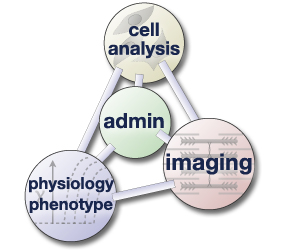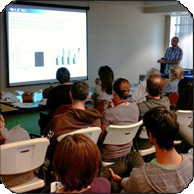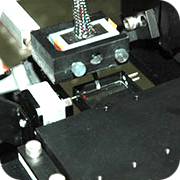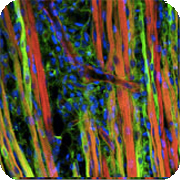
Section 'Sub' Navigation:
Center Cores & Technologies

These Cores are distributed as a "Center without walls" across the University of California, San Diego (UCSD), the Sanford-Burnham Medical Research Institute (SBMRI) and the Scripps Research Institute (TSRI) campuses. These institutions are located within about a kilometer of each other. There is a long tradition of collegiality and cooperativity amongst UCSD, Salk, SDSU, SBMRI, and TSRI—indeed, many investigators have a courtesy appointment at a partner institution, which facilitates supervising one another's graduate students, serving on one another's search committees, and creating joint educational and research programs. There are at least three other NIH P30 Core Centers that connect several of the institutions. There is no denser collection of excellent scientists in such proximity. The scientific disciplines of the 21 Center investigators are diverse; yet all investigators have common interest in the structural and functional properties of skeletal muscle. More information on the mission of the SDMRC can be found here. The SDMRC is supported by a P30 project grant from the NIH: P30AR061303. |
Administrative Core

|
The Administrative Core of the San Diego Muscle Research Center (SDMRC) provides the overall leadership and management of the Research Core Facilities — Phenotyping & Physiology, High Throughput Cell Analysis and Imaging, as well as the Enrichment Program and the Pilot and Feasibility Program.More information on the Administrative Core > |
Muscle Phenotyping & Physiology Core

|
The Phenotyping Core is designed to evaluate the functional properties of muscles, joints, and whole animals created in model systems by the various Center investigators. The Phenotyping Core will provide accessibility to sophisticated physiological and biomechanical testing capabilities to all Center investigators.See all available technologies offered by the Muscle Phenotyping & Physiology Core > |
High Throughput Cell Analysis Core

|
The High Throughput Cell Analysis Core is dedicated to the identification, functional and molecular characterization of muscle-derived cell populations of healthy and diseased adult skeletal muscle. This core includes prospective isolation of muscle-derived cell subpopulations by FACS (Muscle Sorting Service), a high throughput microscopy and screening of libraries of siRNAs, and microRNAs (miRs) and chemical compounds (High Throughput Screening Service), and in vivo cell transplantation into mouse models of disease (Cell Transplantation Service).See all available technologies offered by the High Throughput Cell Analysis Core > |
Imaging Core

|
The Imaging Core will provide both fluorescence light microscopy and electron microscopy resources to Center Investigators to enable evaluation of muscle morphology and structural organization, and to localize specific molecular components in the sarcomeres, cytoskeleton, subcellular organelles and membranes. The Core will provide training and assistance with routine aspects of sample preparation for microscopy, and training and access to microscopes in The Scripps Research Institute (TSRI) Microscopy Facility, and in the Center for Integrated Molecular Biosciences (CIMBio) Fluorescence Microscopy Suite at TSRI. The Core will also assist investigators in application of image analysis software to their experimental problems and in quantitative interpretation of fluorescent image data.See all available technologies offered by the Imaging Core > |